#Palais Schwarzenberg
Explore tagged Tumblr posts
Text
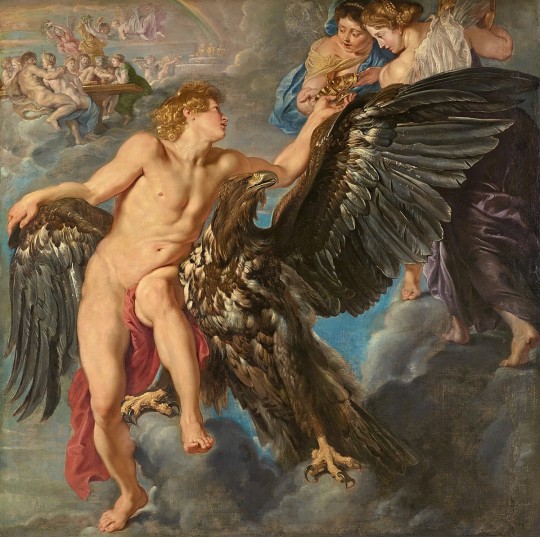
1612, Rubens, Ganymede receives the bowl from Hebe
#Rubens#Ganymede receives the bowl from Hebe#saec. XVII#1611#1612#pictura#Palais Schwarzenberg#Vindobonae#Ganymedes#Iupiter#Zeus
175 notes
·
View notes
Photo
e.
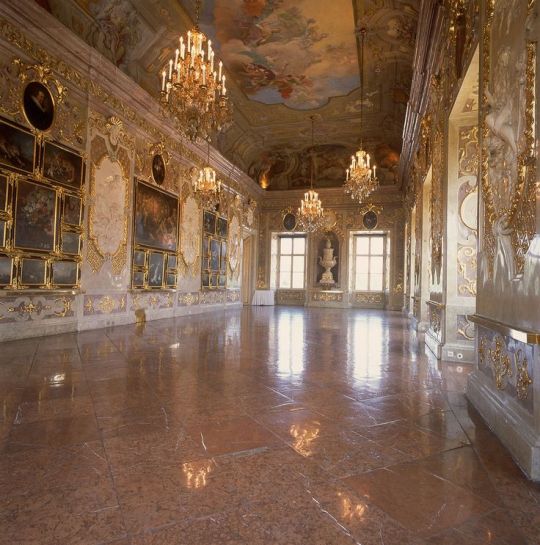
Poetry And Love
313K notes
·
View notes
Text
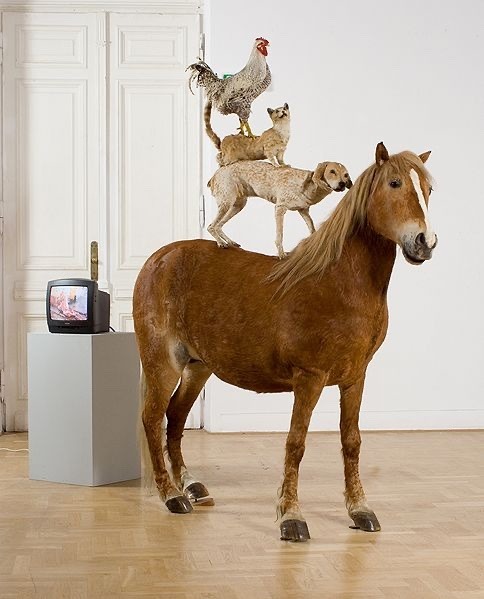
Katarzyna Kozyra (PL, b. 1963)
Pyramid of Animals, 1993,
Zachęta National Gallery of Art.
follow @katarzynakozyrafoundation
Katarzyna Kozyra, Lou Salome Palais Schwarzenberg: Lou Salome, 2005, Archival Pigment Print, 35 2/5 × 26 2/5 in | 90 × 67 cm
#brononthisday Katarzyna Kozyra (born 1963) is a Polish video artist. She studied German studies at the University of Warsaw (1985–1988). In 1993, she also graduated from the Academy of Fine Arts in Warsaw where she studied sculpture and Hochschule für Graphik und Buchkunst in Leipzig. via Wikipedia
@art.by.women_women.in.arts
Katarzyna Kozyra is Poland’s one of the most well known female artist. In the 1990s her work Pyramid of Animals initiated the movement that became well known as critical art. From the very outset, Kozyra has broken social taboos, such as nudity, old age, and death, for which the conservative Polish society regards her as controversial. via Artist's website
[PL] Katarzyna Kozyra urodziła się w Warszawie w 1963 roku. Rzeźbiarka, fotografka, autorka performansów, filmów, instalacji wideo oraz akcji artystycznych. źródło: www Artystki
#katarzynakozyra #palianshow #sztukakobiet #polishart #womensart #videoart #PolishWomenArtists #criticalart #arthherstory #femaleartist
2 notes
·
View notes
Text

"Vue de Prague depuis le Château, avec le Palais Schwarzenberg" de Giovanni Castrucci en "Commesso" de jaspes et agates sur ardoise (XVI-XVIIe siècles) à l'exposition "L'Expérience de la Nature. Les Arts à Prague à la Cour de Rodolphe II" du Louvre, Paris, mars 2025.
1 note
·
View note
Text
Palais Schwarzenberg

L’any 1697, el mariscal Heinrich Franz von Mansfeld, comte de Mansfeld i príncep de Fondi, a més a més de president del Consell de Guerra Imperial sota el regnat de Leopold I, emperador del Sacre Imperi Romano-Germànic, va encarregar un palau a Viena a un dels arquitectes més renombrats de la Cort austriaca, Johann Lucas von Hildebrandt.
El mariscal, procedent d’una família de Saxònia, i amb un feu principesc al Lazio italià desprès de servir la Cort espanyola, volia una residència d’estiu amb un ampli jardí. Però el que de veritat volia era rivalitzar amb un altre gran estadista de la Cort de Viena, el príncep Eugeni de Savoia, noble d’origen francès al servei dels exèrcits austriacs, que va lluitar a la Guerra de Successió espanyola i en diverses campanyes contra els turcs.
La voluntat de Von Mansfeld de no quedar per sota del príncep de Savoia va quedar reflectit a l'elecció de l'emplaçament al costat dels terrenys del Belvedere i a l'elecció del mateix arquitecte, que s’havia format sota la tutela del seu rival i també va haver de rivalitzar amb dos dels altres gran arquitectes del Barroc austriac, Johann Bernard Fischer von Erlach i el seu fill Joseph Emanuel.
No obstant, uns anys més tard, el comte Von Mansfeld va morir i la finca, encara en construcció, va ser adquirida el 1715 pel príncep Adam Franz Karl von Schwarzenberg, qui va encarregar la terminació de l'edifici a Fischer von Erlach pare, que va fer instal·lar les primeres màquines de vapor d’Àustria per garantir el bon funcionament del sistema d’aigua del jardí. Una placa commemorativa a l'ala lateral que dóna a la Prinz Eugen Straße ho testifica avui dia.
La intervenció dels arquitectes més representatius de l’època deixa clara la importància de l’edifici. Von Hildebrandt va participar amb d’altres arquitectes als projectes de l’Abadia de Göttweig i el Palau Weissenstein i obra seva va ser el complex integrat per l’Oberes Belvedere i l’Unteres Belvedere, dos palaus rodejats de grans jardins, encarregat pel rival de Von Mansfeld quan aquest ja havia mort.
Fischer von Erlach pare, per la seva part, té com a principal obra l’església de San Carles Borromeu (Karlskirche, en alemany), projecte iniciat el 1715 que va finalitzar el seu fill. La seva monumentalitat es va inspirar en els temples més importants de la història de l’arquitectura, alguns dels quals va poder conèixer gràcies als seus viatges per Europa.
Una vegada finalitzat, el palau va romandre en mans dels Schwarzenberg (Švarcenberk, en txec), una família que tenia les seves arrels a Bohèmia i Francònia, una àmplia regió principalment situada al nord de Baviera. L’ascens d’aquesta família aristocràtica es va plasmar en els favors rebuts de la noblesa vienesa durant el segle XVIII. Al segle XIX, l’edifici va ser reformat per deixar espai a nous espais enjardinats.
Durant la Segona Guerra Mundial, el palau va patir greus danya pels bombardejos, però va ser restaurat poc després del final del conflicte i roman en possessió de la mateixa família Schwarzenberg fins a l’actualitat. Una part del palau acull un hotel de luxe i un restaurant.
El Palau Schwarzenberg és un dels palaus barrocs amb jardí més importants de Viena. Els jardins ascendents situats darrere de l'edifici inclouen estàtues de gres de Lorenzo Mattielli, gerros de pedra dissenyats per Fischer von Erlach i cascades projectades per Andrea Steinböckh. L'esplèndid interior del palau s'ha conservat en gran part. L'antic pati d'honor està ara asfaltat i serveix d'aparcament.
1 note
·
View note
Text
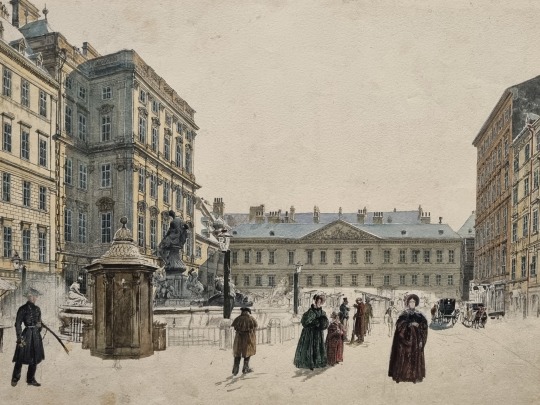
Rudolf von Alt, Mehlmarkt im Winter, 1832 Neuer Markt mit Donnerbrunnen und Stadtpalais Schwarzenberg Рудольф фон Альт, Мучной Рынок зимой, 1832 Новый рынок (Нойер-Маркт) на заднем плане Фонтан Доннера (или Фонтан Провиденции) и Городской дворец Шварценберг, Вена, Австрия Rudolf von Alt, Flour Market square in winter, 1832 New Market square with Donner Fountain (fountain Providentia) and Schwarzenberg Town Palace, Vienna, Austria Seen at the exhibition Jakob, Franz & Rudolf von Alt, Albertina, Vienna, Austria, 9 November 2022 – 29 January 2023
#Rudolf von Alt#Mehlmarkt#Neuer Markt#winter#snow#1832#Schnee#Donnerbrunnen#Providentiabrunnen#Stadtpalais Schwarzenberg#Palais Schwarzenberg#Wien#Innere Stadt#зима#снег#Вена#austria#Австрия#Рудольф фон Альт#Мучной Рынок#Нойер-Маркт#Новый рынок#Фонтан Доннера#Фонтан Провиденции#Дворец Шварценберг#Donner Fountain#Schwarzenberg Palace#Vienne#Autriche#Flour Market
4 notes
·
View notes
Photo
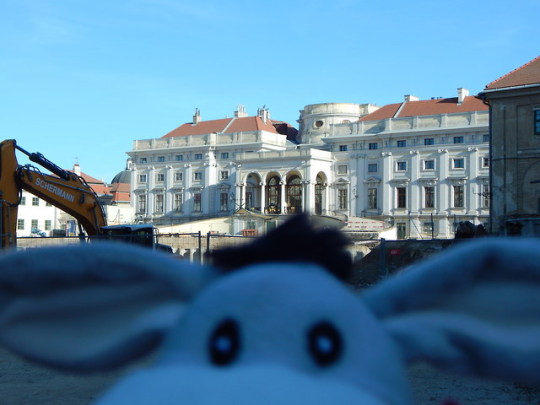
“the palais schwarzenberg”. it is a “baroque palace” in front of “schwarzenbergplatz”....... also the area before was under construction
#schwarzenbergplatz#the palais schwarzenberg#baroque palace#palais#palace#europe#österreich#ole#austria#holiday#trip#wien#vienna
1 note
·
View note
Text
So, I want to thank you so much, @joachimnapoleon for showing your interest in Schwarzenberg’s coat of arms and @josefavomjaaga for your contribution! I actually thought that this particular conversation could be closed but then, unfortunately, came up with some additional thoughts on the matter! 😅
As @josefavomjaaga stated, there was a man in the Schwarzenberg’s family thanks to whom the Turk’s head with a raven pecking out his eye was added to their coat of arms.
And there is this wonderful monument in a modern-day Györ, depicting two military commanders who conquered the same fortress which was held by Turks in 1599 - Adolf zu Schwarzenberg and Miklós Pálffy, Hungarian military man and politician who proved himself in the first wars against Turks as well. ⚔️
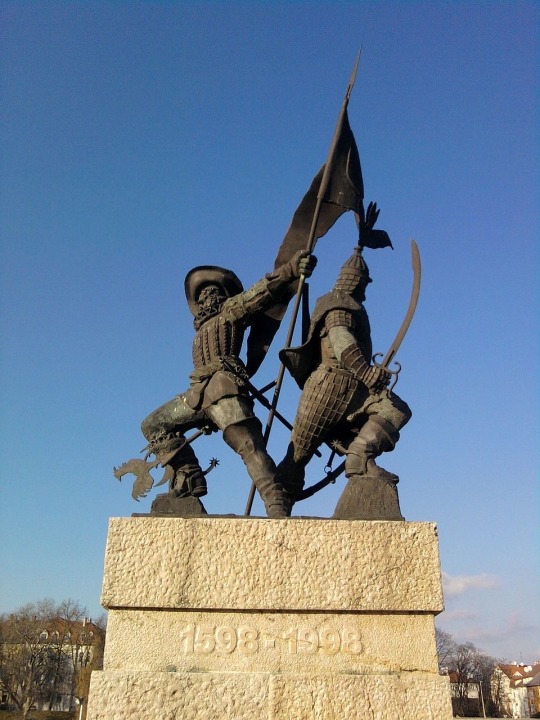
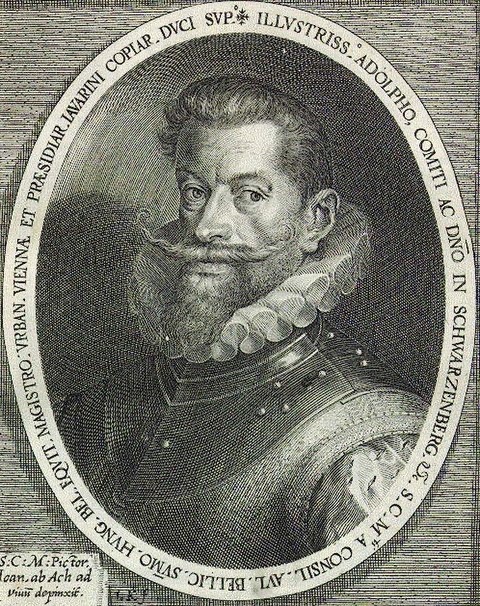
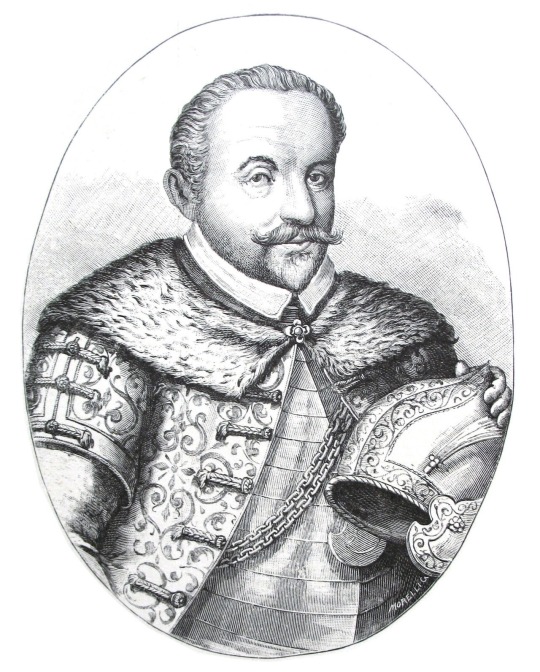
(Now that I think about it, I suddenly remembered the context in which I heard about the exact same Hungarian family within the Napoleonic era: when Metternich’s first marriage with a grand-daughter of renowned Imperial chancellor Kaunitz, Eleonora, was arranged by his mother in 1795, she had to oppose the same matrimonial interest which came from an influential princess Pálffy (nee countess Coloredo) as this woman belonged to the Vienna circle of the most powerful aristocratic families in the Holy Roman Empire. Understandably, nobody wanted to let Eleonora marry some barely-known aristocrat who recently came from Rhein almost without any possessions! But in the end Clemens had his charms and beauty which helped him win Eleonora’s heart over any other more “suitable” candidate from Vienna society. 💅)
Buuut enough about that, let’s get back to House of Schwarzenberg!
That’s how the first transformation of Schwarzenberg’s coat of arms looked like, blue and silver-striped shield being the legacy of the Seinsheim origin:


At those times Schwarzenbergs were counts of the Empire and they remained so until the mid-17th century when Johann Adolf I. zu Schwarzenberg (1641–1670) finally received a princely title.
The last major change in the state of a House came in the beginning of the 19th century with the birth of two male heirs who lived long enough to fulfil the will of theirs grand-grand-grand-father, prince Ferdinand (1652-1703).
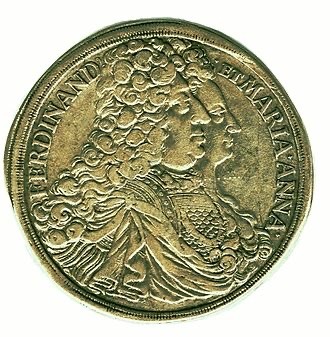
His will essentially proclaimed the division of the house into two princely-titled lines (majorates).
Thus, the senior branch was represented by Joseph II zu Schwarzenberg, the eldest brother of the field marshal renowned for his participation in the Napoleonic wars, and the cadet branch was established by field marshal Karl Philipp zu Schwarzenberg himself. The senior branch held not only Palais Schwarzenberg in Vienna, but also the Dominions of Scheinfeld, Krumlov, Frauenberg and Murau, while the cadet branch resided in Orlík and held few other residences bought by Karl himself.
(Nevertheless, Karl and his wife, Maria Anna von Hohenfeld, still visited Vienna on regular basis. For example, all of their three sons were born in Vienna, most likely in the same Palais Schwarzenberg which already belonged to Karl’s older brother).
To sum it all up, here are their magnificent princely coats of arms! They look almost identical except for the upper part. It probably represents Karl’s military service for the Habsburgs.
There is also a small part with a silver tower on a black hill to commemorate the castle Schwarzenberg in Bavaria which is where it all started. 🏰


And here are the portraits of the two brothers, Joseph (born in 1769) and Karl (born in 1771).
As far as I can tell, they were very close to each other since they grew together and were educated by the same scholars until Karl started his military service in 1786 and then in 1788 went to the war against Turks…
Nice way to honour the memory of his ancestor Adolf, isn’t it? :)
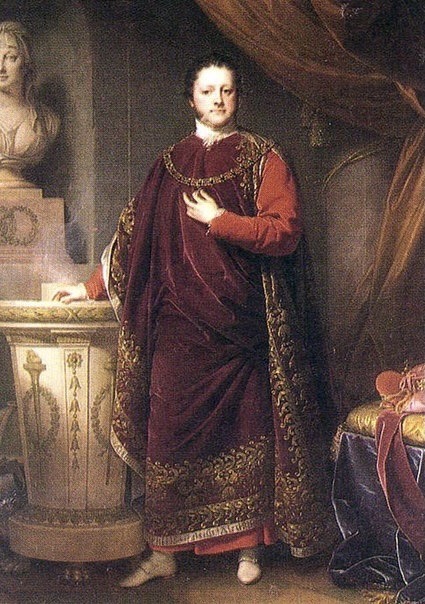
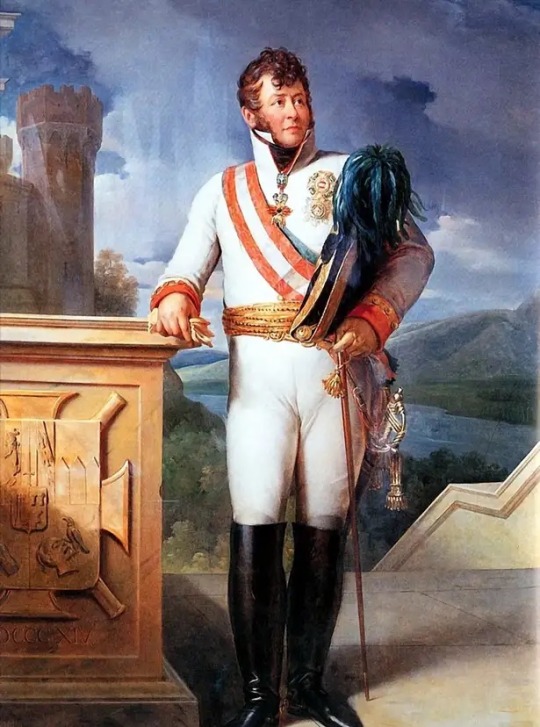
#napoleonic era#napoleonic wars#schwarzenberg#house schwarzenberg#adolf zu schwarzenberg#joseph II zu schwarzenberg#karl zu schwarzenberg#austrian empire
17 notes
·
View notes
Text
Hermann Czech

He is author of numerous critical and theorethical publications, has done research and edited reprints and/or translations concerning Otto Wagner, Adolf Loos, Josef Frank and Christpher Alexander. In his theory (’architecture is background’) the notions of conversation and mannerism play a significant role.
His work is noted for a strong emphasis on context, a sophisticated and often ironic use of architectural elements, and an interest in rules and underlying order rather than sculptural form.
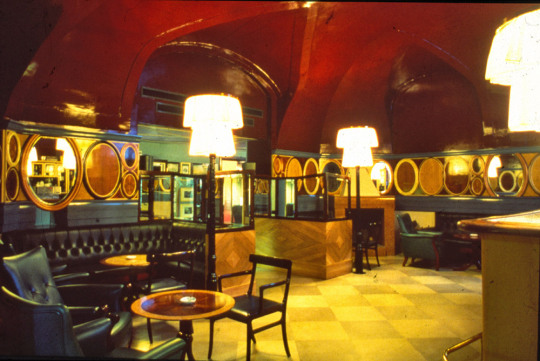
Restaurant and bar in Palais Schwarzenberg in Vienna. Very similar to renovation of Stadt Casino Basel by HdM.
In the 1960s and 1970s Hermann Czech played a decisive role in fostering appreciation of Vienna’s classic works of modern architecture: at the time, Otto Wagner, Adolf Loos and Josef Frank had been forgotten, and some of their buildings were endangered. Czech’s in-depth studies of their work and writings led him to articulate a precise yet ambivalent modern stance, and through it he too became a classic Viennese architect. Irony, an important feature of that stance, reaches its culmination in his design of the restaurant and bar in Palais Schwarzenberg. The building itself – which had already undergone several adaptations, including smaller interventions in the nineteenth and twentieth centuries – served as point of departure for the design. Czech’s close attention to the work sequences of a restaurant and cocktail bar are evident at second glance.
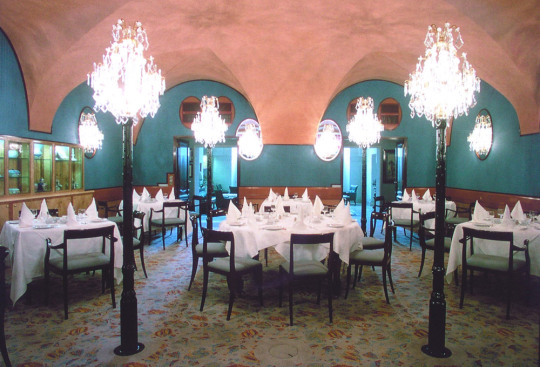
Restaurant and bar in Palais Schwarzenberg in Vienna
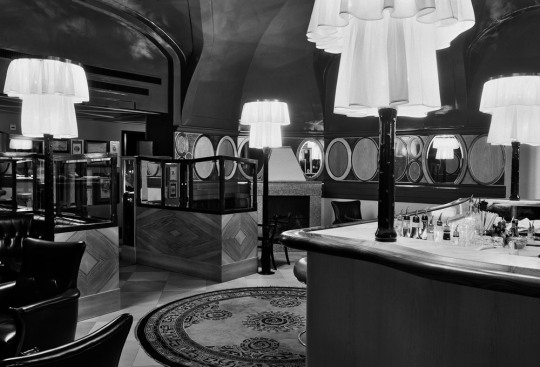
Czech’s lighting concept is also borne of his earlier work. His tongue-in-cheek reinterpretation of a crystal chandelier is the direct response to a design problem: how to position the light at the appropriate low height without causing a disturbing glare.
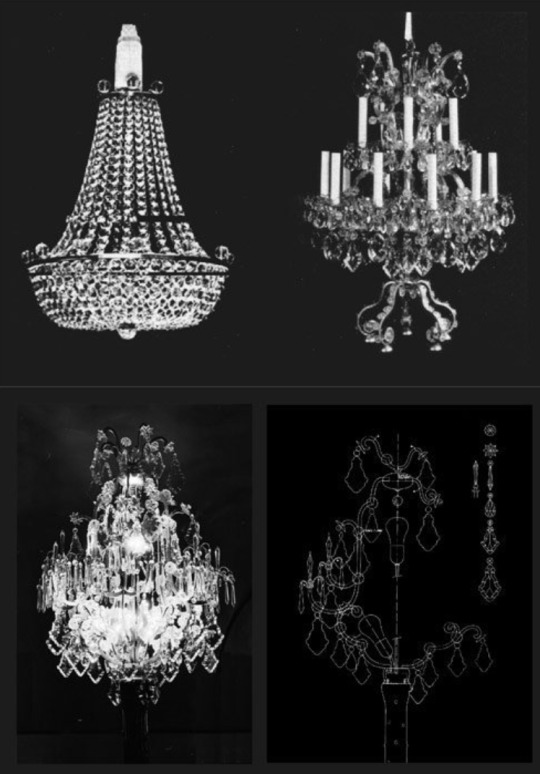
oben: Klassizistischer und barocker Kristallluster unten: Kristalleuchte im Palais Schwarzenberg mit Montageplan

Thonet-Style, 1994, Hermann Czech
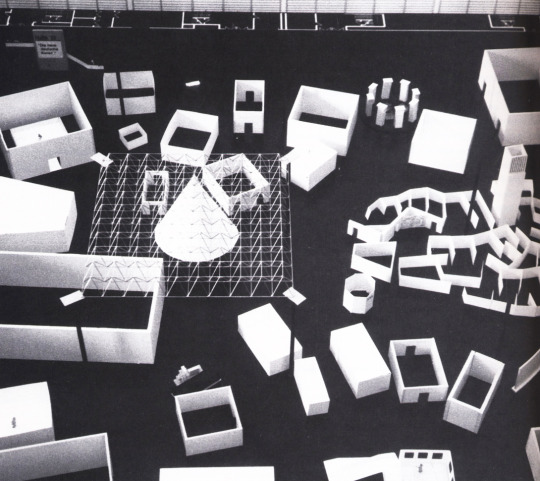
"Von hier aus" at Messe Düsseldorf 1983-1984. Maquette of the display
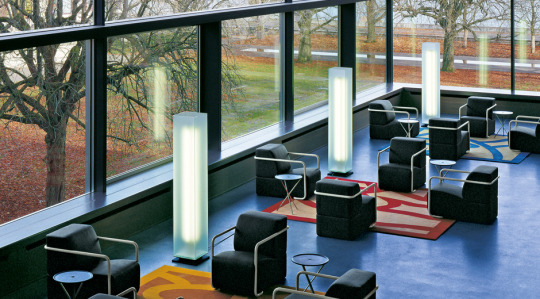
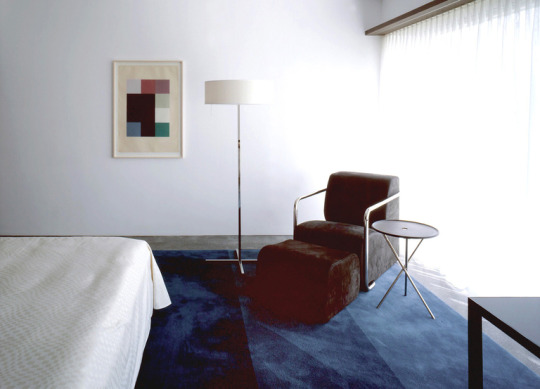
Swiss re Centre, Zürich. Adolf Krischanitz’s AK 04
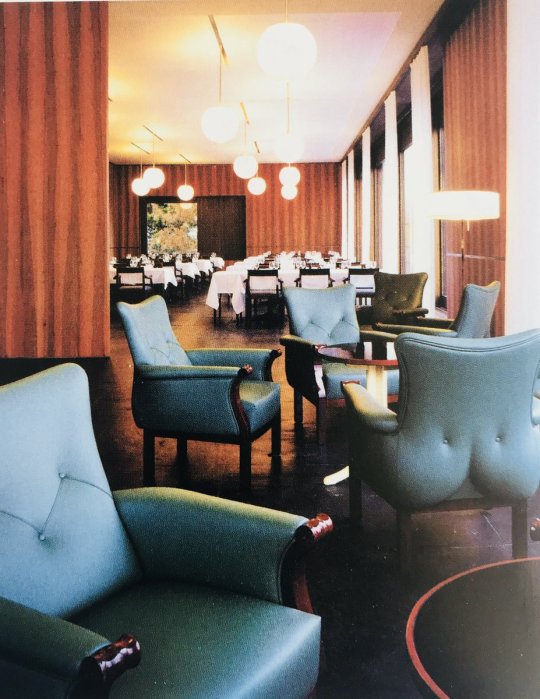
In the restaurant area, the armchairs by Hermann Czech, which were specially manufactured by Wittmann

renovation Altenberg, Hermann Czech 2007
3 notes
·
View notes
Photo
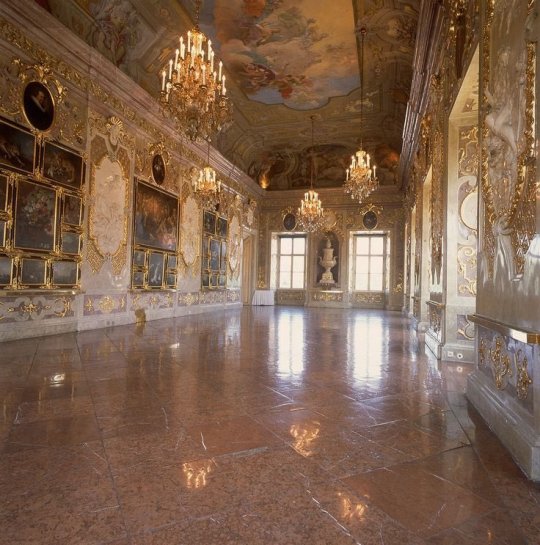
Palais Schwarzenberg, Vienna (Austria, 1697 -1728 architects: Johann Lucas von Hildebrandt and Johann Bernhard Fischer von Erlach)
8 notes
·
View notes
Photo
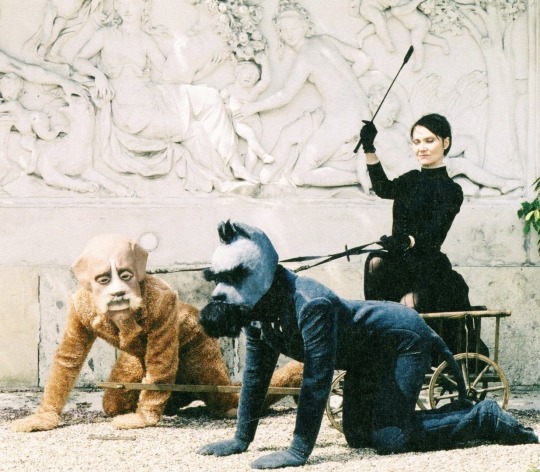
Katarzyna Kozyra, Lou Salomé Palais Schwarzenberg: Carriage with Nietzsche and Rilke, 2005
5 notes
·
View notes
Text
Ein musikalischer Rundgang durch Wien
Der Rundgang beginnt beim Stephansplatz, zieht sich über den Neuen Markt, den Josephsplatz, der Burgkapelle und endet beim Michaelerplatz. Als armer und einsamer Junge beginnt sein Leben unerwarteter Weise in Wien und endet nach sechs Jahren mit einer festen Einstellung und guter Bezahlung. Warum Joseph Haydn jedoch als Sängerknabe bei der Kantorei St. Stephan entlassen wurde und wie er sich verabschiedet hat, erfahrt ihr im folgenden Blog.
Mit acht Jahren war Joseph Haydn ein Mitglied der Sängerknaben der Kantorei St. Stephan. Dort blieb er neun Jahre lang, wo er einen strikten Tagesablauf mit Unterricht, Musikunterricht und Auftritten bei Adeligen folgen musste. Vor der Kantorei stand die Magdalenenkapelle, an die nur noch die roten Pflaster vor dem Stephansdom erinnert. Als Joseph dann in den Stimmbruch kam – selbst Maria Theresia bemerkte 1749, dass Haydn wie ein Hahn krähe -, wurde eine Kastration Josephs in Erwägung gezogen. Bei Verweigerung der Operation jedoch wurde der Junge einfach auf die Straße gesetzt – mit nicht mehr als der Kleidung, die er trug, und drei weiteren Hemden. Um den Leitern der Anstalt und den restlichen Schülern in Erinnerung zu bleiben, schnitt Joseph seinem Klassenkameraden den Zopf ab.
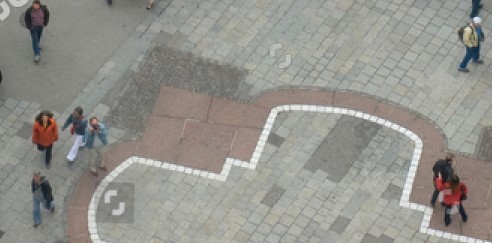
Foto: Teil des Platzes vor dem Stephansdom, wo die Magdalenenkapelle stand. Credit: Shutterstock
Die nächste Station ist der Neue Markt, auf dem bis zum zweiten Weltkrieg das Palais Schwarzenberg stand, in dem das Oratorium „Die Schöpfung“ seine Uraufführung feiern durfte. Dieser Platz ist, mit dem Palais Schwarzenberg und dem Vorgängerbau neben der Kaisergruft, ein wichtiger Bestandteil der österreichischen Musikgeschichte. Haydn, Mozart, Salieri und viele andere Musiker haben dort viel Zeit verbracht. Im Haus am Neuen Markt 2, in dem Haydn wohnte, wurde die österreichische Kaiserhymne komponiert.
Weiter geht es zum Josefsplatz, wo die Hofpfarrkirche bei Augustiner steht. Dort wurden viele kirchenmusikalischer Werke der Haydn-Brüder aufgeführt, bis die josefinischen Gottesdienstreformen die Instrumentalmusik in Kirchen verbot. Während dieses Verbots, das mehr als zehn Jahre lang aufrecht bliebt, haben Haydn und Mozart keine Kirchenmusik komponiert. Nach Änderung dieses Gesetzes schrieb Haydn zuerst die „Pauken-Messe“, mit dem allbekannten Paukenschlag. Außerdem entwickelte Joseph Haydn in dieser Zeit mit der orchestralen Kirchenmusik die Grundlagen der Symphonie, die sich vor allem Carl Philipp Emanuel Bach annahm.
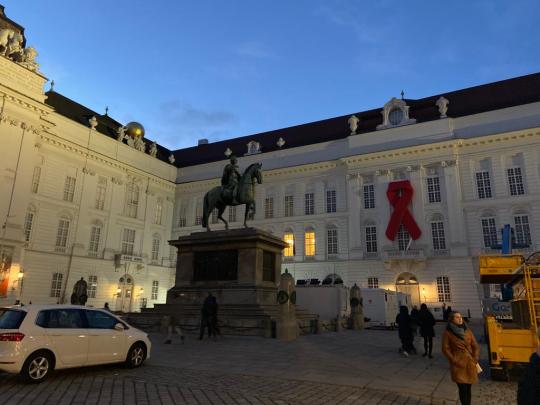
Foto: Josephsplatz. Credit: Nikola Palic
Durch den Durchgang kommt man zum Schweizerhof, wo die Burgkapelle von außen zu sehen ist. Hierher kamen Joseph und sein jüngerer Bruder Michael als Sängerknaben oft geschickt, um in der kaiserlichen Kapelle zu singen. Nach einer kurzen Reise nach Mariazell im Jahr 1750 bekam er ein Darlehen von seinem späteren Trauzeugen, mit dem er sich endlich eine eigene Wohnung am Michaelerplatz leisten konnte.
Diese Wohnung am Michaelerplatz teilte Haydn lediglich mit einem Clavichord, eine ältere Version des Klaviers. In jener Dachkammer, an die heute nur noch eine Gedenktafel erinnert, lehrte Haydn sich selbst das Klavier- und Geigenspiel und komponierte nach Studieren von Literaturwerken von Johann Joseph Fux und Carl Philipp Emmanuel Bach seine erste Messe.
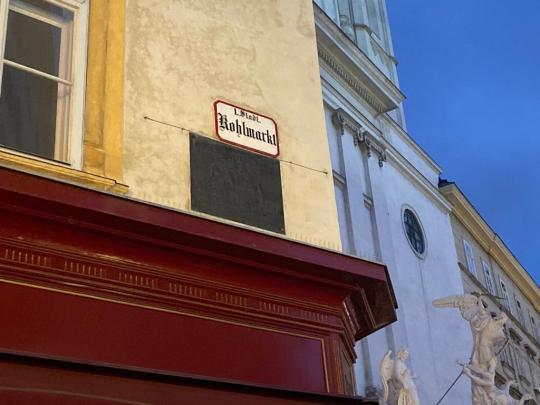
Foto: Gedenktafel Josephs Haydn an seine erste Wohnung. Credit: Nikola Palic
Joseph Haydn | Die Haydnrolle & Punsch
In der Bäckerei Altdorfer, die auf der Hauptstraße 10 in Eisenstadt liegt, holte Haydn damals schon gerne hin und wieder eine Mehlspeise. Was 1746 als Lebzelterei, Wachszieherei und Zuckerbäckerei begann, ist heute eine Bäckerei, die mehrere Filialen verwaltet. Die „Haydnrolle“ besteht aus einem Lebkuchenteig, der mit Powidl gefüllt ist. Das ganze Gebäck wird anschließend mit feinem Marzipan und edler Schokolade überzogen.
Haydn notierte sich auf einer seiner England-Reisen das Rezept für einen Punsch, den er beim Prinzen von Wales aufgetischt bekam. In das Getränk kamen 1 Butl Champagner, 1 Butl Borgogne, 1 Butl Rum, 10 Zitronen, 2 Pomeranzen und 1 ½ Zucker.
#classical music#wien#vienna#musik#joseph haydn#wonderful#love for music#lecker#recipe#food#18th century#19th century
3 notes
·
View notes
Text
Semi-Useful Notes for Writing for THE ROYAL TUTOR
(Author’s Note: This includes all twelve episodes of the anime (plus the movie), as well as up through Chapter 84 of the manga (18 Oct 2019) and what info I can glean from the Character Book (unfortunately it’s all in Japanese). I will continually update this post as the series progresses and new spiffy stuff shows up, so visit my Master List of my ROYAL TUTOR Stuff to see the latest version.)
While writing A Noble Soul (which is done, by the way!), I had the idea that I personally love the little touches of authenticity that make a story more 'real,' and hey, if nothing else, I learn a few things along the way. (I *am* a researcher, after all!) So I did a lot of searching to find the real-world analogues of the buildings, references, history, and so forth from the series. As you’ll see in the descriptions, I explain how I determined which ones were which.
You’re welcome to post questions, comments, share this, etc. Hope it helps anyone else who wants to write for the ROYAL TUTOR fandom! (Quick question - would everyone prefer me to include chapter references for stuff? It’d make this post much longer, but if the fandom thinks it’d be useful, I can give it a shot.)
So, here we go!
GRANZREICH FAMILY INFO
Viktor von Granzreich, current ruler of the kingdom of Granzreich, assumed the throne at 18 (considering his father’s much later death, this may have been for reasons of health on his father’s part, possible abdication on his father’s part, or other political reasons)
Maria von Granzreich, Viktor’s mother, still living
NOTE: Her sibling (name and gender as yet unmentioned) is the Queen’s parent
Father’s name as yet unmentioned, died of natural causes at ‘a ripe old age’
NOTE: The princes mention in earlier chapters that they do remember their grandfather from when they were small, so his death is relatively recent)
Viktor’s wife (appears only once in flashback, name as yet unmentioned)
NOTE: One of her siblings (not sure if brother or sister) is the parent of Beatrix von Lothringen
(Beatrix also has three younger brothers and one younger sister)
Viktor’s children:
Eins von Granzreich, Viktor’s eldest child and firstborn son
Kai von Granzreich, Viktor’s second son
Currently engaged to Beatrix von Lothringen, first cousin to the princes
Bruno von Granzreich, Viktor’s third son
Leonhard von Granzreich, Viktor’s fourth son
Licht von Granzreich, Viktor’s fifth son
Adele von Granzreich, Viktor’s sixth child and only daughter
LOCATIONS:
GRANZREICH (real world analogue: Austria)
Granzreich population: ~6 million
Side note: Both Viktor and Leonhard are shown riding white horses - these are the famed Lipizzaner stallions, from the Spanish Riding School of Vienna, Austria
Other side note: Viktor’s typical outfit is clearly inspired by the military field uniform of Franz Josef I, Emperor of Austria (the white variant that the princes wear on some of the covers/inside art is the gala/formal version); the three medals shown on Viktor’s uniform are the Order of the Golden Fleece around his neck, what appears to be a simplified version of the Long Service Cross over his heart, and what appears to be a simplified version of a Knight Grand Cross of the Order of Maria Theresa just below that (a round circle with a cross).
90% of Granzreich’s population is Gherman (see below)
3% of Granzreich’s population is Kvel (see below)
Wienner (capital) (real world analogue: Vienna, Austria)
Wienner's population: ~1.3 million
Weissburg/Weisburg Palace (both spellings are used) (real world analogue: Hofburg Palace, Vienna, Austria) - specifically, the part often shown as denoting the palace is the Neue Berg wing
Karl Theater (real world analogue: Carltheater) - operettas
Remnant Theater (possible real world analogue: Raimund Theatre) - operettas
National Opera House (real world analogue: Staatsoper (originally Vienna Court Opera)) - opera house
National Art Museum (real world analogue: Kunsthistorisches Museum - directly opposite the palace, it is the largest art museum in the country; the image of the museum behind Heine when he announces the prize matches the façade of the building)
Granzreich University (real world analogue: there is no University of Austria, per se, but there is the University of Graz (the second largest city in Austria), which is the second largest and second oldest university in Austria)
Wienner University (real world analogue: University of Vienna, the building shown in both the anime and the manga is the main building - this is where Doctor Dmitri (and later Bruno) comes to lecture – it is also recognized as a leading institution for studies in Humanities – Bruno would do well here studying Philosophy!)
Prunksaal (real world analogue: Prunksaal) – the national library (also housed within the palace in another building)
Within the Prunksaal is the Royal Archive, where historical documents, judicial records, going back hundreds of years, and other documents the royal family keeps from one generation to another are preserved; only royals and a fraction of statesmen are permitted to use it (this is the place referenced in the anime that Prince Licht says even princes can’t visit without the king’s express permission)
The plaza/fountain where the KaseKrainer stand is (real world analogue: Donnerbrunnen Fountain in the center of the Neuer Markt)
Granzreich Military Academy (real world analogue: Theresian Military Academy (one of the oldest in the world) - yearly had 100 nobles and 100 commoners enrolled)
Princes are enrolled at the age of 15 (in-series)
Schwarz Palace (real world analogue: Schloss Neuwaldegg, aka Villa Schwarzenberg - at first I thought this was the Palais Schwarzenberg, but double-checking the architecture confirms it's the Schloss) - in-series, given to a general who played a major role in the war 150 years ago by the reigning king, Friedrich IV, and currently Prince Eins’ residence
Kohl Street, the site of Café Mitter Meyer's second location (real world analogue: Kohlmarkt, which is indeed right next to the palace, and leads past the Catholic Church of St. Peter)
The train station (mentioned in-series when Viktor gives directions, as well as the departure point for various trips) (real world analogue: Wien Südbahnhof, Vienna’s main train station)
Wienner Grand Hotel (mentioned in-series as Herman Koenig’s previous place of employ) (real world analogue: Grand Hotel Wien, Vienna’s first Grand Hotel, opened in 1870, and *the* last word in elegance - Herman would have worked in the Kavalierbar, the hotel’s bar/lounge)
Augustinian Church (Augustinerkirche) (not mentioned in series, just a useful note) - the parish church of the royal court (located next to the Hofburg)
Salzichl (the royal villa and hot springs) (real world analogue: the Kaiser Therme at Bad Ischl, aka the ‘Emperor’s Spa, favoured holiday resort of Emperor Franz Joseph I - and yes, the architecture as shown in the manga is exactly what the villa looks like... Leonhard would his own reasons to love it there, as it also has a renowned pastry shop)
OTHER NATIONS:
Fonsein/Fonseine (both spellings are used, though Fonseine is used more often) (real world analogue: France)
Capital - Fleur (real world analogue: Versailles - while the capital of France is actually Paris, Versailles was the primary residence of French royalty until the revolution, and the art in the manga depicts the Palace of Versailles and its famed gardens (which, as Bruno ruefully notes, are in fact larger than the gardens of Weissburg Palace, aka the Hofburg). Rather than differentiate between Versailles and Paris (approximately 15 miles away), the manga conflates the two of them together, as the map that Claude shows the princes depicts Paris’s center. Also, the manga accurately states it’s a half-day from Wienner to Fleur by train - at a guess, the train station that the princes arrive at is Gare de l’Est.) Some of the famous sights in Fleur include:
The Etoile Arc (real world analogue: the Arc de Triomphe, and as Claude points out, is a monument to France’s endurance through war and hardship, and is carved with bas-reliefs indicating peace and friendship)
The Opera House (real world analogue: the famed Paris Opera House (immortalized in literature by Gaston Leroux in his novel The Phantom of the Opera), stated to have been completed “five years ago” (as the Paris Opera House was completed in 1875, this puts the current date at 1880-ish)
The Art Museum (real world analogue: the museum depicted here is the Louvre, and Claude is not kidding when he says you could spend a week and STILL not see all the art museums in Paris)
The Cathedral (real world analogue: Notre-Dame de Paris - immortalized in literature by Victor Hugo is his novel The Hunchback of Notre Dame, although Leonhard possibly mis-translates Claude’s description as to when it was built - Notre-Dame de Paris was completed FIVE hundred and fifty years earlier, not FOUR hundred and fifty)
The Department Store (real world analogue: because the interior art is so limited, this is likely one of three places - Le Bon Marché, the Bazar de l’Hôtel de Ville (BHV), or Printemps Haussman)
Current queen: Queen Isabelle (distant blood relatives of the same family as the von Granzreichs) (real world analogue: debatable, as post-1870, France was ruled by republican government, rather than a monarchy - also as of Chapter 69, Claude confirms that his mother and father are both abroad (so yes, Isabelle is currently married).
Her son, Claude, first prince of Fonseine, the only child (and a child not much older than Adele, and THIS is Adele's intended fiance!) (I was under the impression she was affianced to someone else already!)
Granzreich and Fonseine have been in friendly relations for the past 200 years through royal intermarriage
AND EINS IS TO BE ENGAGED TO SOMEONE IN FONSEINE (correction - Eins is later revealed to be engaged to the Princess of Belgian (see below); however given the close intermarriages between their real world analogues of France, Austria, Spain, Germany, and Belgium, this may have been a negotiation point between Fonseine and Granzreich for upcoming treaties or other political purposes)
Beyer (real world analogue: Bavaria (southern state in Germany))
Belgian (real world analogue: Belgium)
Current queen: Queen Charlotte (real world analogue: Charlotte, Princess of Wales, wife to Leopold I of Belgium)
Princess Paola, second princess of Belgian (later referred to in Chap 77 as Charlotte) (real world analogue: Charlotte, later Empress of Mexico - possible reason for the name change is to avoid confusion - her brothers are also mentioned in the chapter... real life analogues for them would be Leopold II and Phillippe (their third brother died in infancy)
Viktor confirms in Chap 77 that the two nations are still on good terms
Ghermany (real world analogue: Germany)
Iel (real world analogue: Palestine/Israel)
Kingdom fell 1800 years ago. Kvel is used more as an indication of the Jewish populace rather than a specific nation, both in terms of bloodline and social/religious heritage
Madri (real world analogue: Spain)
Nederland/Neterlanden (both spellings are used) (real world analogue: the Netherlands)
Orosz (manga)/Erosz (anime) (real world analogue: Russia)
Capital - Pietarigrad (real world analogue: St. Petersburg - while the capital of Russia is Moscow, St. Petersburg (at one point named Petrograd) is Russia's second largest city, is Russia's cultural capital, and is the port city referenced here) (and it's 1800 km from Wienner to Pietarigrad, and the railroad route they show IS accurate to travel from Vienna to St. Petersburg!)
Grand Hotel Orosz (real world analogue: Grand Hotel Europe (confirmed via pictures of the architecture compared to the manga; opened in 1875, and one of the three most luxurious hotels in St Petersburg)
Orosz University (real world analogue: Saint Petersburg State University, the oldest university in Russia)
Doctor Dmitri references an art museum while discussing Pietarigrad (real world analogue: the Russian Museum)
Grand Theater (real world analogue: Mariinsky Theatre, the preeminent music theatre of late 19th century Russia, and the site of the premieres of most of Russia's most famous ballets, operas, and other music)
Romano (real world analogue: Russia or POSSIBLY Poland, more on that in a second)
King: Alexander Alexandrovitch Romano (real world analogue: Czar Alexander II)
Crown Prince Ivan Alexandrovitch Romano
Prince Eugene Alexandrovitch Romano
Russian uses patronymic names, so your middle name is a derivative of your parent)
ALTERNATE real world analogue: Poland - since Austria and Russia do not share a border (and mention is made of inspecting mines on the border between their nations), it’s possible that instead Romano (while borrowing heavily from Russian inspiration for names) is actually Poland. (Rationale: what is modern-day Czechia was originally part of the Austro-Hungarian empire, which DOES share a border with Poland.) While Polish is traditionally written in Latin script, it *can* be written in Cyrllic.
I’m still nailing down whether the Romano flag is based on an actual nation flag.
Venezia/Veneto (both are used) (real world analogue: Venice)
Laguna Empire (real world analogue: TBD)
Kingdom of Kataro (possible real world analogue: Qatar)
Yapan (real world analogue: Japan)
Eastern Continent (real world analogue: Asia)
Western Continent (real world analogue: Europe)
GRANZREICH’S ECONOMY:
1 florin = 100 kreutzer (real world analogue: the florin and the kreutzer, ratio the same following Austria-Hungary's decimalization of the currency system in 1857)
A doll costs 55 kreutzer
The Royal Guard makes 30k kreutzer/year (300 florins/year, as per the anime and the manga)
The ransom for Maximilian and Heine was to be 1500 florins, or 150,000 kreutzer… meaning the ransom for Kai at 1 million florins was 100 million kreutzer -- Heine wasn't kidding when he says it's the annual budget for a small country in the 1880s, (In the manga, the ransom is set at 300,000 florins for the prince, and 1500 florins for Heine and Maximilian)
Licht, on the other hand, earns 120 florins working at the cafe... which strikes me as odd because he only works one shift a week (even if a shift is potentially 12 hours). Now, this might actually be him figuring he works full-time, which would make more sense. But this has to be a YEARLY income, there’s no way he makes this much in a month if a member of the Royal Guard makes 300 florins a year.
Rosenberg quotes a rent of 150 florins for a 2br flat... again, this has to be for a year, there’s no way this is monthly.
Economic crisis 30 years ago (real world analogue: the European financial crisis beginning in the 1850s)
Granzreich's main industries: porcelain and wine
Also agriculture, according to the author's notes at the end of Vol 2
1880s TECHNOLOGY:
COMMUNICATION: Cables/telegrams are now fast enough for a 24-48hr message even all the way across Europe -- and crossing the English channel by ferry takes 1.5-2hrs
LOCAL TRAVEL: Primarily carriages, horseback, and walking -- trains are for longer-distance travel
INTERNATIONAL TRAVEL: You can get from London to Perm, Russia within SEVEN DAYS
TRAINS: The Orient Express (1883) went from Paris to Vienna in 15 hours overnight (not much different from now, actually!)
TELEPHONES: The telephone exchange does exist but the infrastructure is still VERY new and not heavily in use yet
POWER: Electricity is rapidly gaining ground for newer construction, but older buildings are still using gas, lamps, candles, etc.
1880′s EUROPEAN CULTURE:
Ballet, opera, operettas, plays, music
Social halls are still separated by 'class' (nobility vs commoner)
Popular dances in Europe at this point include the waltz (DUH, this is Vienna), the redowa, the mazurka, the polka (big shock with Germany next door), the cotillion, and the varsouvienne (another Polish dance)
Social etiquette at an event included the use of 'dance cards' (or fans!) - these were presented with a list of the songs/dances to be held over the course of the event, and if a gentleman wished to engage a lady for one, he wrote down his name (like making a reservation)
There is a TON of information out there about how one does (and does not) behave at a social event during that day and age, and safe bet that our dear princes have had it drilled into them from the time they were small. Some fun ones include:
WHY one wears gloves (because bare hands indicates holding hands, which is SHOCKINGLY intimate)
Not dancing with the same partner more than once (unless you're either engaged or about to be, because it puts you on intimate terms with your partner)
What is socially acceptable to eat at a party (the reason trifles and 'snacks' are served is so no one can embarrass themselves at table)
Games are occasionally combined with dancing (if you've seen AMADEUS, where during the masquerade they're playing Musical Chairs as they dance, and the loser has to pay a forfeit, you get the idea)
60 notes
·
View notes
Photo
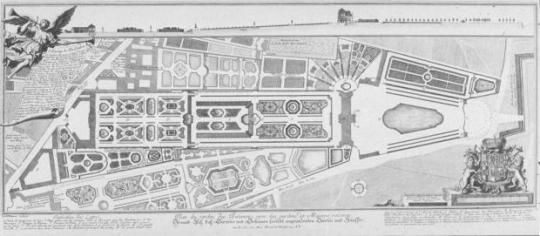
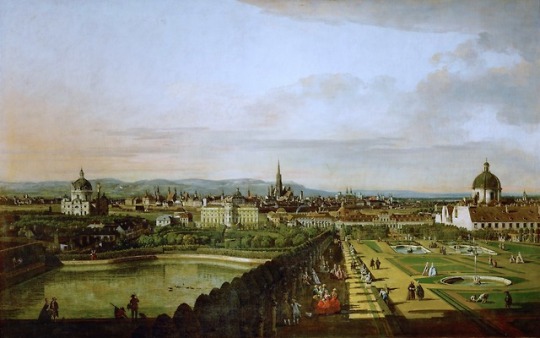
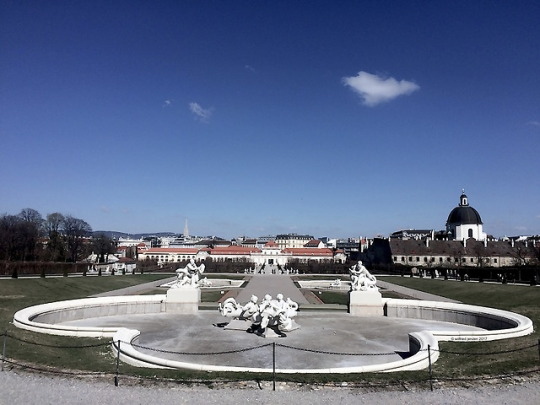

uHasselt FacArk Studio 2 bachelor architectuur, studiereis Wien 2017 Johann Lucas von Hildebrandt (1668-1745) / Johann Bernhard Fischer von Erlach (1656-1723) & Joseph Emanuel Fischer von Erlach (1693-1742), Palais Schwarzenberg, 1697-1728 Johann Lukas von Hildebrandt, Unteres un Oberes Belvedere, 1714-16/1720–26 Dominique Girard (1680-1738), Belvedere-Garten, 1700-25 Donato Felice d’Allio (1677-1761), Salesianerinnenkirche, 1717-19 Bernardo Bellotto (’Canaletto’, 1722-1780), “Wien, vom Belvedere aus gesehen“ 1758–61
1 note
·
View note
Text
Speaking of the hunt, I would love to share one more Schwarzenberg-related story before I go on a small break, tied to the New Year celebrations which are incredibly festive in Russia. :)
This time it will be about grand-grand-parents of field marshal Schwarzenberg: Adam Franz zu Schwarzenberg (1680 - 1732) and Eleonore von Schwarzenberg (nee Lobkowicz) (1682 - 1741). Next to Eleonore you can see a little boy: that’s actually Karl’s grand-father Joseph I zu Schwarzenberg (in whose honour his elder brother was named) (1722 - 1782).
Since I promised to speak more about one particular topic, you can already guess: field marshal’s grand-grand-parents were incredibly passionate hunters (I guess, it actually ran in Karl’s blood)! In the paintings presented below you can see Eleonore in her illustrious attire holding a hunting rifle while her husband Adam wears the ceremonial robes of the Order of the Golden Fleece. 🎖


They were so passionate actually that prince Adam himself once hunted a deer with such immense antlers that his record was clogged in the 21st century only! Also those deer antlers have been preserved to this day in a very curious form: they are actually presented on the back side of the facade of Palais Schwarzenberg in Prague.
That’s extremely original, in my opinion! 🦌



Unfortunately, the hunt became the main reason of prince Adam’s death as well: he was shot dead in 1732… by the emperor of Holy Roman Empire, Charles VI. There he is, the man, the legend *aggressive yelling*!
(Was it some kind of a special entertainment for some emperors in the past, I wonder? Can you say something about that, emperor Napoleon? :/)

During that disastrous hunt, they happened to track down the exact same animal and were accidentally placed on the opposite sides of a field. When a deer jumped out of the bushes, emperor took a shot and hit prince in the stomach. Emperor’s physician tried to save his life but it didn’t work out. After 12 hours of agony prince Adam passed away... 😔
Feeling somewhat guilty, the emperor made his 10-year-old son a knight of the Order of the Golden Fleece as well. He grew to become one of empress Maria Theresa’s councillors and earned the rank of imperial prince for his House.
But the main question remains: does the life of a devoted nobleman equal to the most prestigious order in the Empire only…


(As a small finishing touch I bring you today the portrait of Johann I zu Schwarzenberg, prince Joseph’s son and field marshal Karl’s father 🤲🇦🇹)

#schwarzenberg#house schwarzenberg#adam franz zu schwarzenberg#eleonore von schwarzenberg#charles vi habsburg#joseph i zu schwarzenberg#johann i zu schwarzenberg#holy roman empire#austrian history#18th century
13 notes
·
View notes
Photo

Katarzyna Kozyra, Lou Salomé Palais Schwarzenberg: Lou Salomé, 2005
#katarzyna kozyra#lou salomé#performance#photography#art#postmasters#vienna#dream logic#fairytale#rilke#nietzsche
235 notes
·
View notes